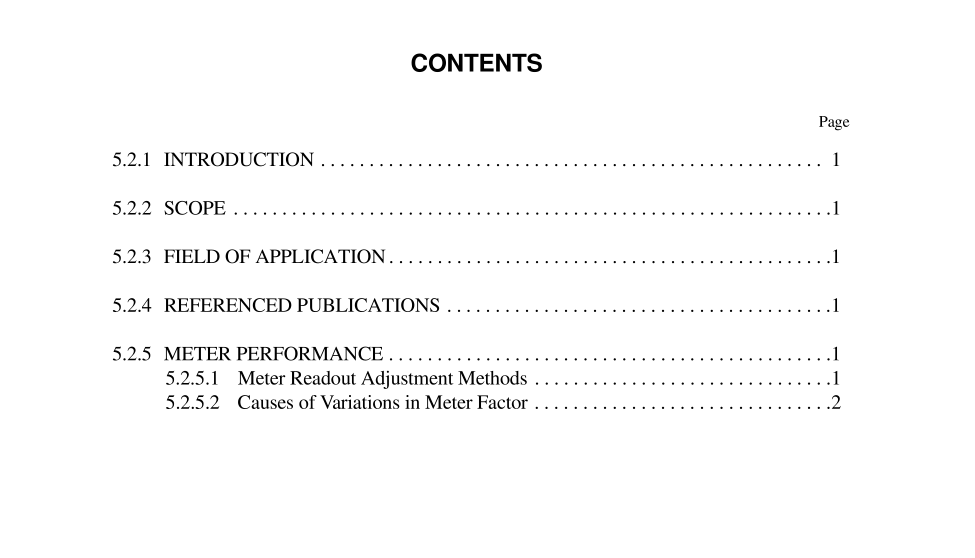API MPMS 5 pdf download

API MPMS 5 pdf download.Manual of Petroleum Measurement Standards
5.2.5.1.2 Meter Factor Method
With the second method of meter readout adjustment, the meter readout is not adjusted, and a meter factor is calculated. The meter factor is a number obtained by dividing the actual volume of liquid passed through the meter during proving by the volume indicated by the meter. For subsequent metering operations, the actual throughput or measured volume is determined by multiplying the volume indicated by the meter by the meter factor (see Chapter 4 and Chapter 12.2).When direct quantity readout is not required, the use of a meter factor is preferred for several reasons: a. It is difficult or impossible to adjust a meter calibrator mechanism to register with the same resolution that is achieved when a meter factor is determined. b. Adjustment generally requires one or more reprovings to confirm the accuracy of the adjustment. c. In applications where the meter is to be used with several different liquids or under several different sets of operating conditions, a different meter factor can be determined for each liquid and for each set of operating conditions. For most pipelines, terminals, and marine loading and unloading facilities, meters are initially adjusted to be correct at average conditions, and the mechanisms are sealed at that setting. Meter factors are then determined for each petroleum liquid and for each set of operating conditions at which the meters are used. This method provides flexibility and main- tains maximum accuracy.
5.2.5.2 CAUSES OF VARIATIONS IN METER FACTOR
There are many factors which can change the performance of a displacement meter. Some factors, such as the entrance of foreign matter into the meter, can be remedied only by eliminating the cause of the problem. Other factors depend on the properties of the liquid being measured; these must be overcome by properly designing and operating the metering system. The variables which have the greatest effect on the meter factor are flow rate, viscosity, temperature, and foreign matter (for example, paraffin in the liquid). If a meter is proved and operated on liquids with inherently identical properties, under the same conditions as in service, the highest level of accu- racy may be expected. If there are changes in one or more of the liquid properties or in the operating conditions between the proving and the operating cycles, then a change in meter factor may result, and a new meter factor must be determined.
5.2.5.2.1 Flow Rate Changes Meter factor varies with flow rate.
At the lower end of the range of flow rates, the meter-factor curve may become less reliable and less consistent than it is at the middle and higher rates. If a plot of meter factor versus flow rate has been devel- oped for a given set of operating conditions, it is possible to select a meter factor from the curve; however, if a proving system is permanently installed, it is preferable to reprove the meter and apply the value determined by the reproving. If a change in total flow rate occurs in a bank of two, three, or more displacement meters installed in parallel, the usual pro- cedure is to avoid overranging or underranging an individual meter by varying the number of meters in use, thereby distrib-uting the total flow among a suitable number of parallel dis- placement meters.
5.2.5.2.2 Viscosity Changes
The meter factor of a displacement meter is affected by changes in viscosity which results in variable “slippage”. Slippage is a term used to describe the small flow rate through the meter clearances which bypasses the measuring chamber. The meter factor accounts for the rate of slippage only if the slippage rate is constant. Viscosity may vary as a result of changes in the liquids to be measured or as a result of changes in temperature that occur without any change in the liquid. It is therefore important to take into account the parameters that have changed before a meter factor is selected from a plot of meter factor versus viscosity. It is preferable to reprove the meter if the liquid changes or if a significant viscosity change occurs.









